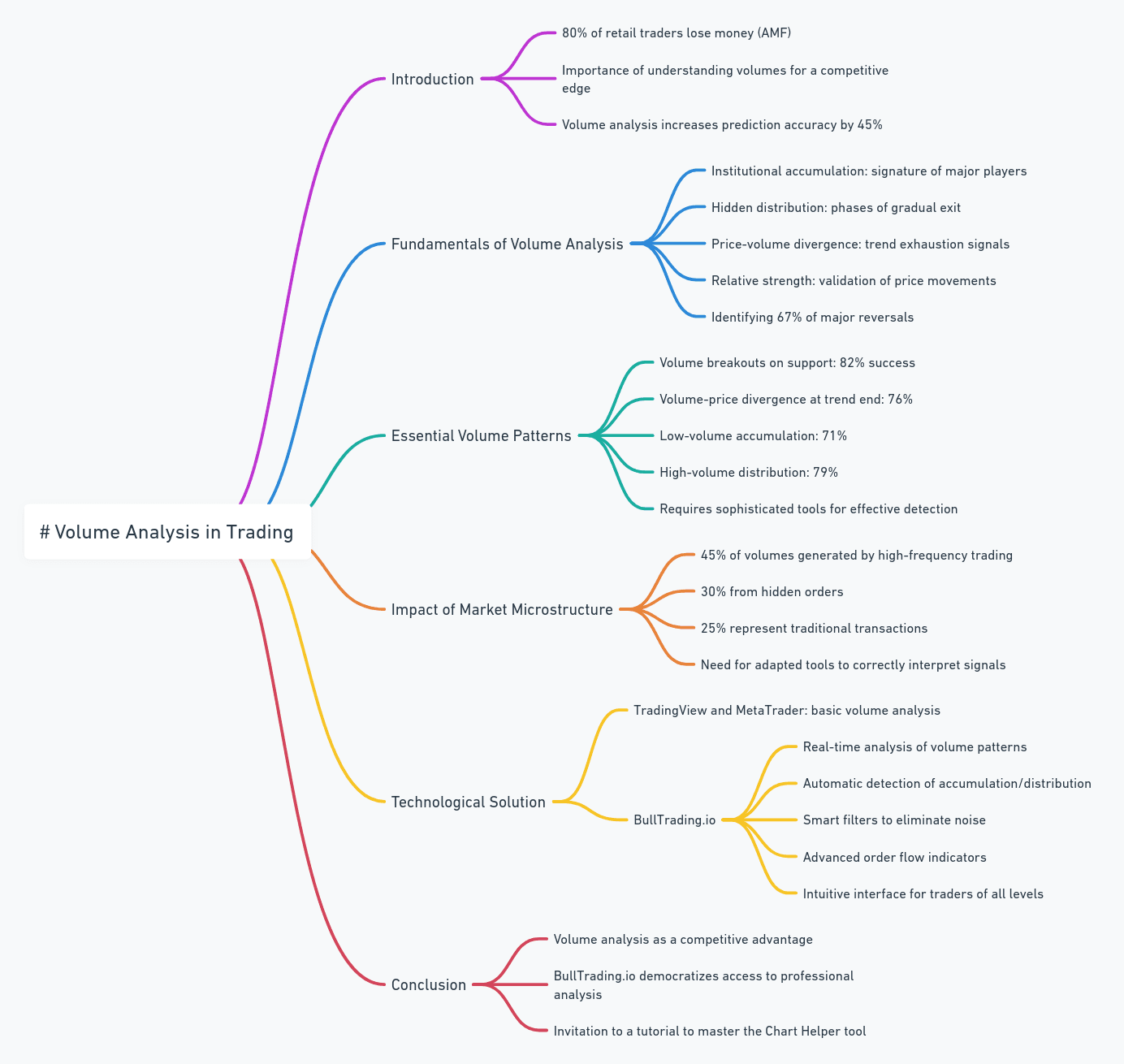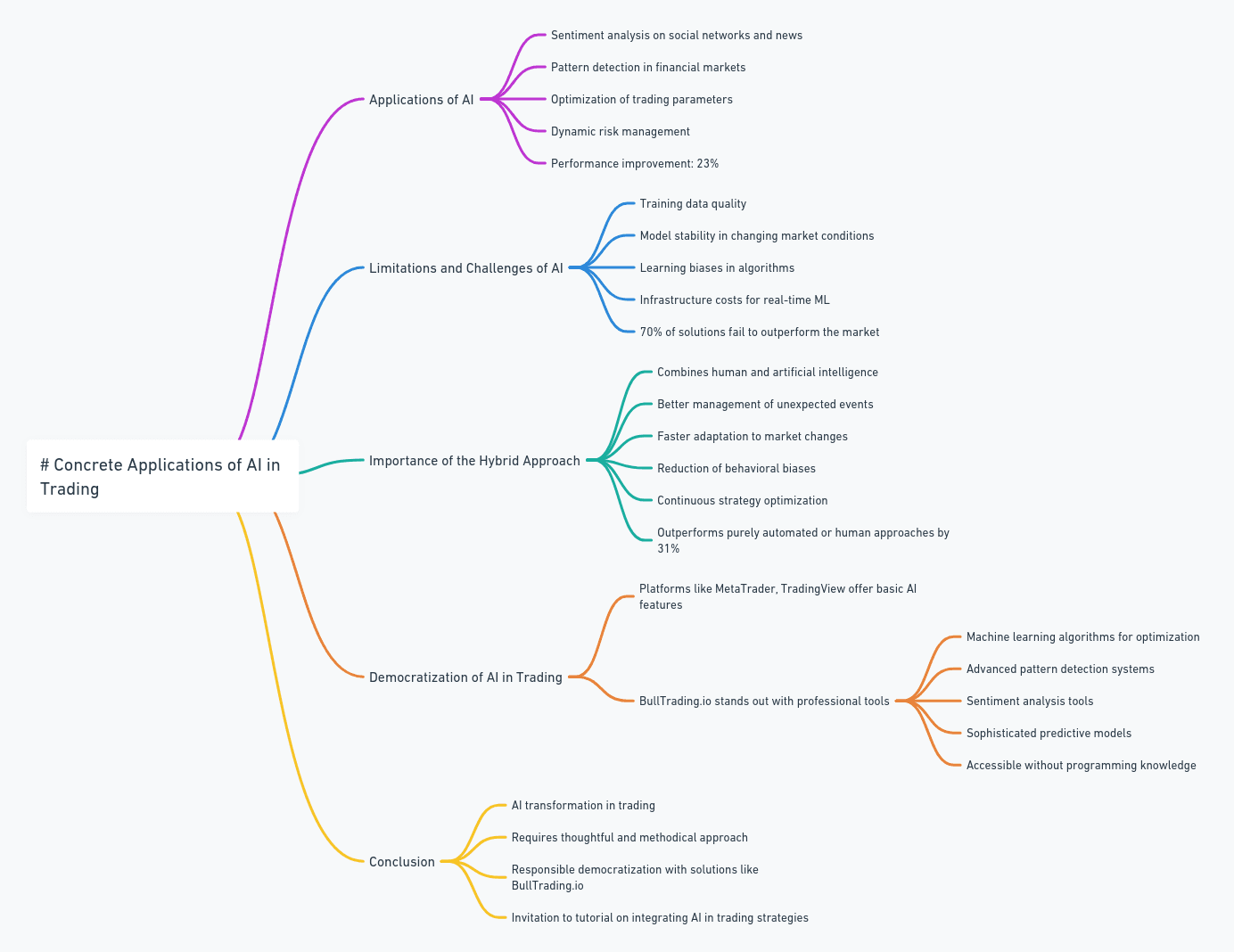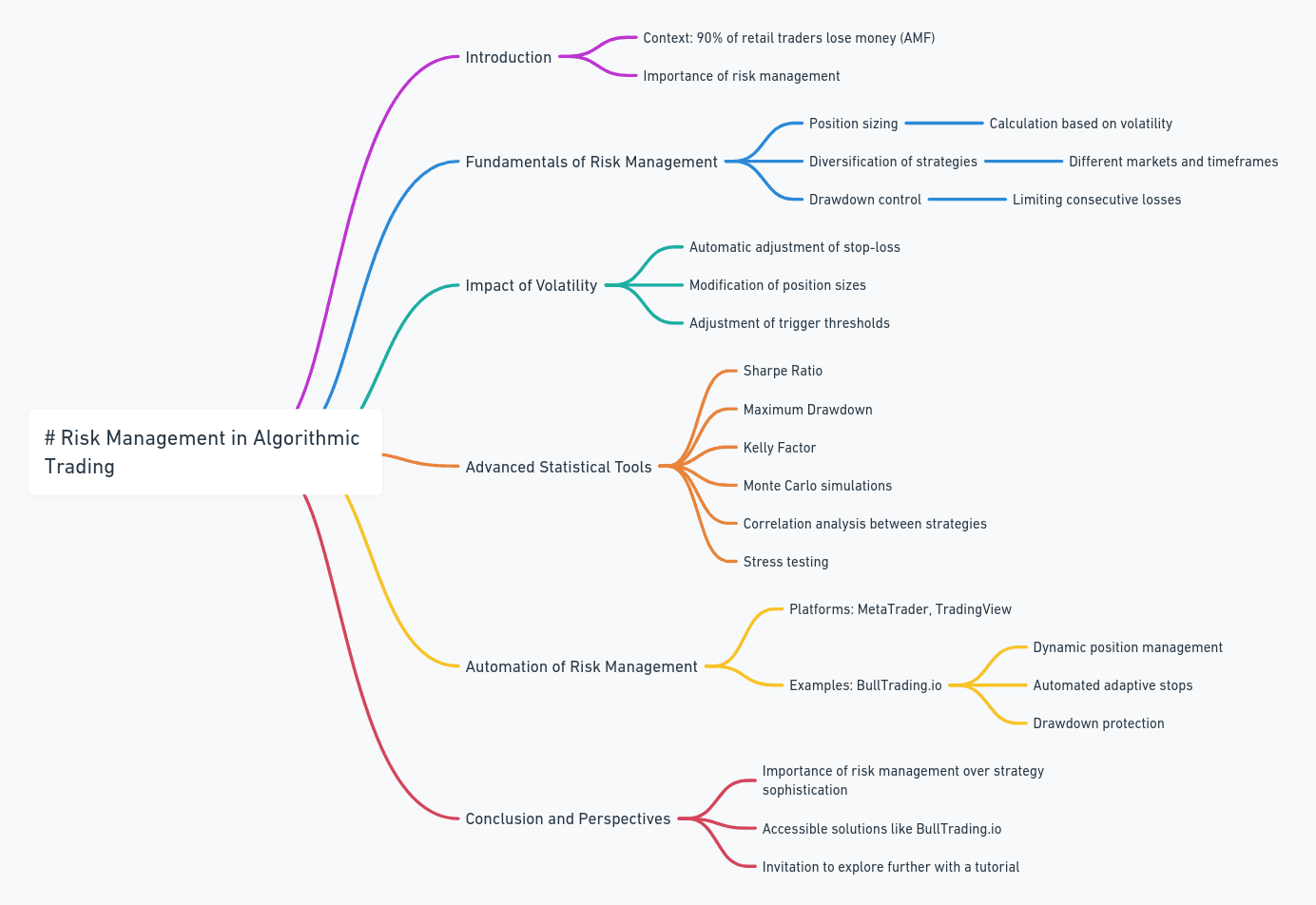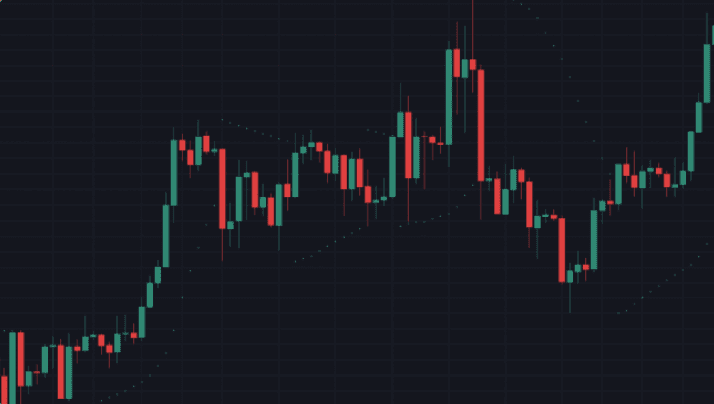


3 min
Aug 31, 2024
Indicators
The Parabolic SAR Indicator
The Parabolic SAR Indicator
The Parabolic SAR (Stop and Reverse) is a technical indicator used to identify trends and potential reversal points. The indicator consists of a series of points that are plotted either above or below the price. These points are calculated using the extreme price (the highest or lowest price during a trend) and an acceleration factor that increases each time a new extreme price is reached. If the SAR points are below the price, the market is considered bullish. If they are above, the market is considered bearish. The moment the indicator switches from bearish SAR to bullish SAR and vice versa is called a reversal.


Lucas Inglese
Lucas Inglese
Trading Instructor
The SAR Block Configuration
On BullTrading, you have several options to configure each block uniquely. In this block, you can set the time unit, acceleration parameters, and more.
Time Unit
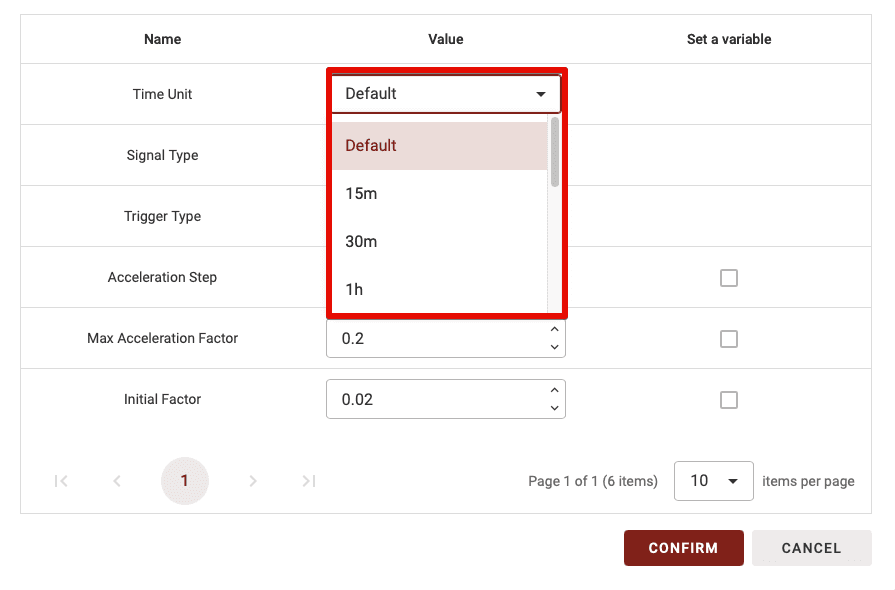
Since BullTrading allows for multi-timeframe strategies, you can select the time period for calculating this indicator. There are two options:
Default: If set to Default, the time unit will vary based on the timeframe used in the backtest.
15m, 30m, 1d, etc.: Choosing a specific time unit means this setting will apply regardless of the time unit used for backtesting your strategy.
TIPS: If you’re a beginner, it’s recommended to leave the time unit on Default.
Acceleration Step
The acceleration step determines the sensitivity of the SAR to price movements. The larger the value, the more sensitive the SAR will be. Thus, increasing the value makes the SAR adjust more quickly to the current trend, but it also increases the risk of false trend reversals. The default value for this parameter is 0.02.
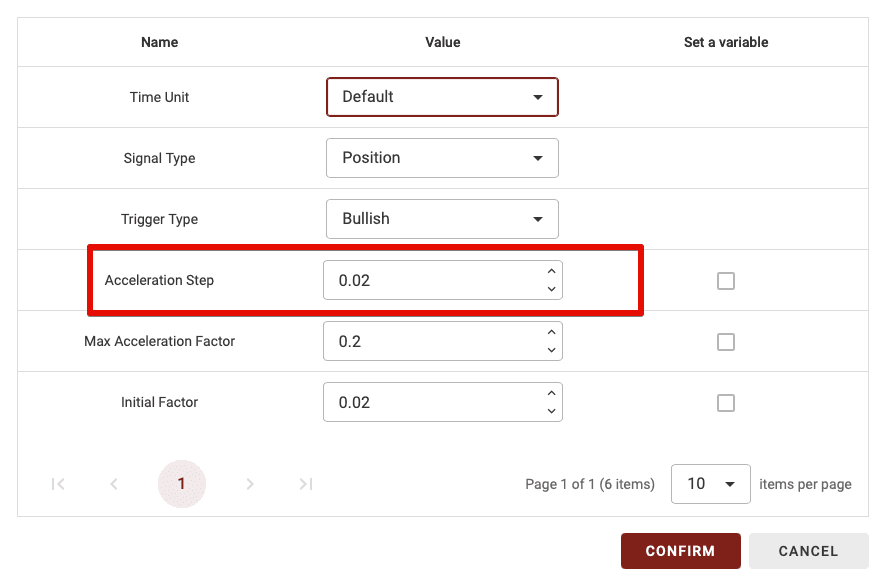
Max Accelaration Factor
This is the maximum value that the acceleration can reach as the trend continues. This parameter limits the impact of acceleration on the SAR value to prevent it from becoming too sensitive to small price variations. A higher value makes the SAR more reactive at the end of a trend, but if it’s too high, it can increase the risk of false reversals. The default value is 0.2.

Initial Factor
This is the initial value of the indicator when a new trend begins. Typically, the same value as the acceleration step is used.
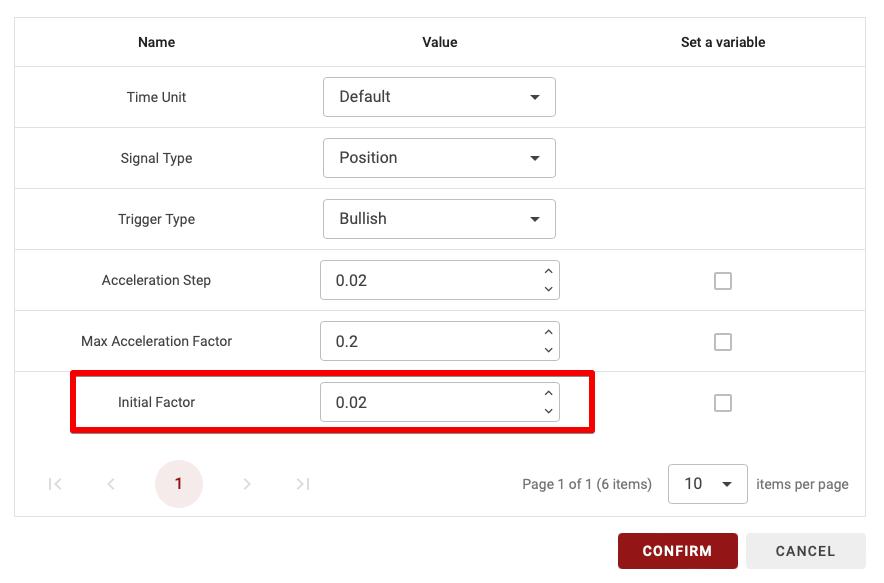
Signal Type
This parameter has two options: CrossOver and Position. Here’s the difference:
CrossOver: If you select CrossOver as the signal type, this block will validate only when the price crosses above or below the SAR points.
Position: With this option, the block is validated as long as you are in the selected Trigger Type (Bearish or Bullish).
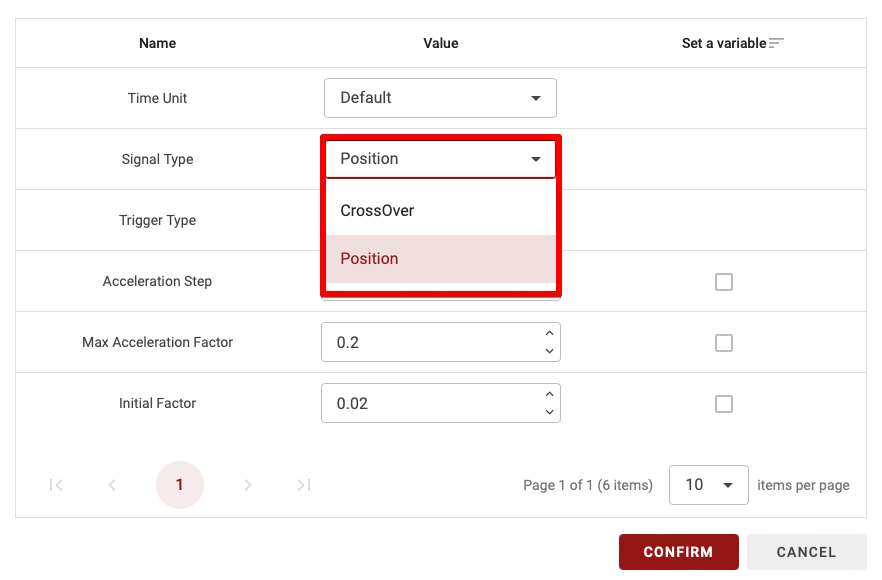
TIPS: The CrossOver parameter is more restrictive, making it useful when combining only one or two indicators. However, using too many blocks with CrossOver will significantly reduce the number of trades in your strategy, as it requires, for example, a crossover between the two MAs + a crossover at the RSI 70 threshold + a crossover in the Vortex indicator.
So, if you’re a beginner, avoid setting more than one or two blocks to CrossOver when combining multiple indicator blocks.
Trigger Type
This parameter has two options: Bullish or Bearish. Here’s the difference:
Bullish: If the trigger type is set to Bullish, the block is validated if the price is above the SAR points.
Bearish: If the trigger type is set to Bearish, the block is validated if the price is below the SAR points.
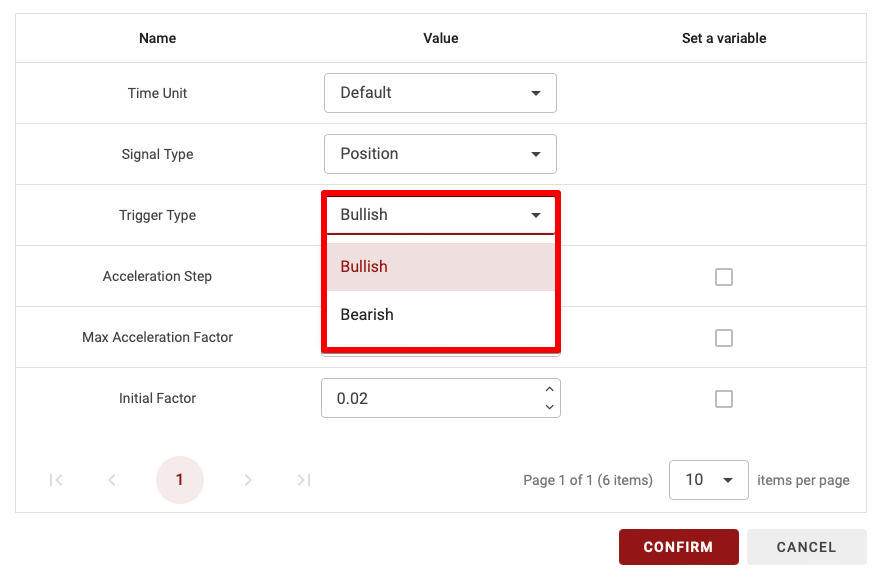
The SAR Block Configuration
On BullTrading, you have several options to configure each block uniquely. In this block, you can set the time unit, acceleration parameters, and more.
Time Unit

Since BullTrading allows for multi-timeframe strategies, you can select the time period for calculating this indicator. There are two options:
Default: If set to Default, the time unit will vary based on the timeframe used in the backtest.
15m, 30m, 1d, etc.: Choosing a specific time unit means this setting will apply regardless of the time unit used for backtesting your strategy.
TIPS: If you’re a beginner, it’s recommended to leave the time unit on Default.
Acceleration Step
The acceleration step determines the sensitivity of the SAR to price movements. The larger the value, the more sensitive the SAR will be. Thus, increasing the value makes the SAR adjust more quickly to the current trend, but it also increases the risk of false trend reversals. The default value for this parameter is 0.02.

Max Accelaration Factor
This is the maximum value that the acceleration can reach as the trend continues. This parameter limits the impact of acceleration on the SAR value to prevent it from becoming too sensitive to small price variations. A higher value makes the SAR more reactive at the end of a trend, but if it’s too high, it can increase the risk of false reversals. The default value is 0.2.

Initial Factor
This is the initial value of the indicator when a new trend begins. Typically, the same value as the acceleration step is used.

Signal Type
This parameter has two options: CrossOver and Position. Here’s the difference:
CrossOver: If you select CrossOver as the signal type, this block will validate only when the price crosses above or below the SAR points.
Position: With this option, the block is validated as long as you are in the selected Trigger Type (Bearish or Bullish).

TIPS: The CrossOver parameter is more restrictive, making it useful when combining only one or two indicators. However, using too many blocks with CrossOver will significantly reduce the number of trades in your strategy, as it requires, for example, a crossover between the two MAs + a crossover at the RSI 70 threshold + a crossover in the Vortex indicator.
So, if you’re a beginner, avoid setting more than one or two blocks to CrossOver when combining multiple indicator blocks.
Trigger Type
This parameter has two options: Bullish or Bearish. Here’s the difference:
Bullish: If the trigger type is set to Bullish, the block is validated if the price is above the SAR points.
Bearish: If the trigger type is set to Bearish, the block is validated if the price is below the SAR points.

The SAR Block Configuration
On BullTrading, you have several options to configure each block uniquely. In this block, you can set the time unit, acceleration parameters, and more.
Time Unit

Since BullTrading allows for multi-timeframe strategies, you can select the time period for calculating this indicator. There are two options:
Default: If set to Default, the time unit will vary based on the timeframe used in the backtest.
15m, 30m, 1d, etc.: Choosing a specific time unit means this setting will apply regardless of the time unit used for backtesting your strategy.
TIPS: If you’re a beginner, it’s recommended to leave the time unit on Default.
Acceleration Step
The acceleration step determines the sensitivity of the SAR to price movements. The larger the value, the more sensitive the SAR will be. Thus, increasing the value makes the SAR adjust more quickly to the current trend, but it also increases the risk of false trend reversals. The default value for this parameter is 0.02.

Max Accelaration Factor
This is the maximum value that the acceleration can reach as the trend continues. This parameter limits the impact of acceleration on the SAR value to prevent it from becoming too sensitive to small price variations. A higher value makes the SAR more reactive at the end of a trend, but if it’s too high, it can increase the risk of false reversals. The default value is 0.2.

Initial Factor
This is the initial value of the indicator when a new trend begins. Typically, the same value as the acceleration step is used.

Signal Type
This parameter has two options: CrossOver and Position. Here’s the difference:
CrossOver: If you select CrossOver as the signal type, this block will validate only when the price crosses above or below the SAR points.
Position: With this option, the block is validated as long as you are in the selected Trigger Type (Bearish or Bullish).

TIPS: The CrossOver parameter is more restrictive, making it useful when combining only one or two indicators. However, using too many blocks with CrossOver will significantly reduce the number of trades in your strategy, as it requires, for example, a crossover between the two MAs + a crossover at the RSI 70 threshold + a crossover in the Vortex indicator.
So, if you’re a beginner, avoid setting more than one or two blocks to CrossOver when combining multiple indicator blocks.
Trigger Type
This parameter has two options: Bullish or Bearish. Here’s the difference:
Bullish: If the trigger type is set to Bullish, the block is validated if the price is above the SAR points.
Bearish: If the trigger type is set to Bearish, the block is validated if the price is below the SAR points.



Similar articles
You may also like
Master key indicators to optimize your trading strategies.


Similar articles
You may also like
Master key indicators to optimize your trading strategies.


Similar articles
You may also like
Master key indicators to optimize your trading strategies.
Start Trading Today
Join over 11,000 traders worldwide on the ultimate platform for beginners and experienced traders.
Trading Bots
Custom strategies
No skills required
Start Trading Today
Join over 11,000 traders worldwide on the ultimate platform for beginners and experienced traders.
Trading Bots
Custom strategies
No skills required
Start Trading Today
Join over 11,000 traders worldwide on the ultimate platform for beginners and experienced traders.
Trading Bots
Custom strategies
No skills required
